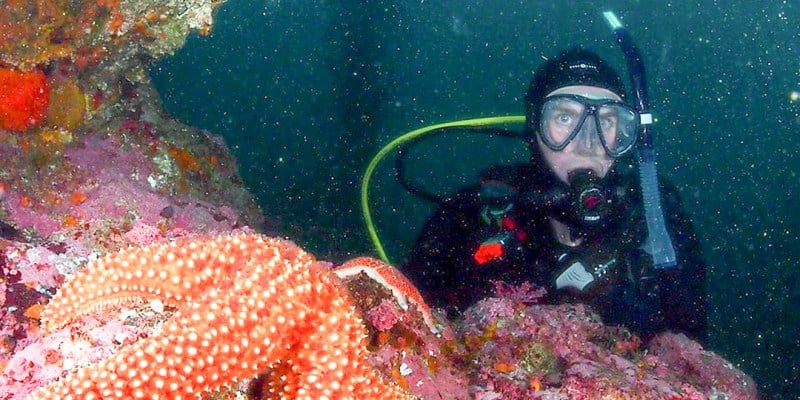
Since its inception last year, Stanford Underwater has brought Stanford’s scuba community together by organizing diving trips. However, liability, insurance and equipment concerns have prevented the group from receiving official recognition and approval from Student Activities and Leadership (SAL), the organization that approves and oversees University student groups.
Alina Luk ’16, the president of Stanford Underwater who founded the club last year with Andrew Todhunter, the Resident Fellow for Kimball Hall and a former diver for National Geographic, has applied for official club status three times but was rejected every time by SAL.
“It’s been frustrating to go through that process and continuously be rejected…but we’re basically this community that’s going to be here regardless of whether or not we’re approved,” Luk said.
Joy Leighton, the communications director for Student Affairs, said in an email to The Daily, “We recognize the group’s interest in becoming a VSO [Voluntary Student Organization] and, over the last two years, University staff have worked to find a way of provid[ing] this activity; however, the group has been unable to find a scuba insurance carrier that will cover club activities, which is required.”
SAL outlines their criteria for club approval on their website and explicitly lists a scuba diving club as an example of a disallowed student organization. Luk is not the first student to attempt to create an official scuba club, and all past applications have also been rejected.
“University staff have concluded that a few groups, including scuba, require a level of staff oversight and management that is beyond the scope of our central activities offered through recognized student organizations,” Leighton wrote.
Luk currently has no plans to submit another application. Nonetheless, although the rejections prevented Stanford Underwater from becoming officially recognized, they helped shaped the group into the casual scuba club that it is today.
“While we were waiting to hear back from SAL, [Todhunter] and I [decided to] connect everyone who has an interest in diving on a Facebook page, and within two weeks we had over a hundred people join,” Luk said.
David Fairburn, a first-year engineering graduate student who joined the group earlier this year and now organizes most of the diving trips, uses the Facebook page to announce trips and to keep the group’s members in contact. Fairburn explained that most of the dives take place in Monterey and generally take place every other week.
“Because we are technically not an official club, Stanford Underwater only exists because people want to hang out with other scuba divers and go on dives,” Fairburn said.
In addition to applying for club status through SAL, Stanford Underwater tried to work with Stanford Outdoors to secure diving equipment for potential use on diving trips. However, more safety and insurance concerns prevented any further action.
“If [Stanford Outdoors] were to provide gear for people who rent scuba diving equipment, they would have to make sure that the gear was safe and would have to re-service the gear every 50 dives, and it would be an ongoing pain,” Fairburn said.
“At Hopkins Marine Station, they do scuba diving every single day, so it is possible—it’s just about how much work you want to put into it,” Fairburn said.
Despite the community-based nature of the group, Fairburn explained that it has been a challenge to keep Stanford Underwater continuously active, as he and Luk are the only two members completely involved in the group’s operations. Although the group has some returning members, they have seen a lot of turnover in membership during the group’s short existence.
Without official club recognition from the University, Stanford Underwater does not receive any funding from sources outside of its membership. Fairburn said that scuba rentals in Monterey cost approximately $65 for a single-day dive, which can be an obstacle for prospective members.
“The biggest thorn [of not being recognized] is that we really want to introduce people to this amazing world underwater and these amazing opportunities to dive in Monterey, but if people don’t have the financial means to do it, we aren’t able to provide much aid,” Luk said.
Contact Zachary Birnholz at zacharyb ‘at’ stanford.edu.
